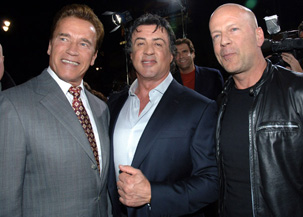|
|
Top Film Industry Stories of 2013: #12'80s action heroes are put out to pastureBy David MumpowerJanuary 6, 2014
The news was not any better for Bruce Willis a few months later. His other “safe” project for 2013 was another sequel, Red 2. The follow-up to the surprise 2010 hit was given a production budget of $84 million. The expectation was that it would match if not surpass the $196 million earned by Red. Obviously, that did not happen. Red 2 failed to meet even the most realistic of expectations, grossing $53.3 million domestically. That total represents less than 60% of Red’s $90.4 million tally. Globally, Red 2 finished with $137.2 million, almost $60 million short of the first film. Bruce Willis tried to play it safe in 2013 with a pair of no-brainer sequels. Both of them failed as audiences put him out to pasture. Had G.I. Joe not been delayed into 2013, Willis would have suffered the worst year of his career. And let’s be honest that G.I. Joe’s success was primarily due to the presence of Channing Tatum and Dwayne “The Rock” Johnson, the new breed of action stars, rather than Willis. Every new year starts with the philosophy of out with the old, in with the new. When the New Year’s Eve ball dropped at the beginning of 2013, studios went against the popular adage. Instead, they tried to force feed consumers with the greatest hits of the 1980s. The end result is that audiences found Sylvester Stallone, Arnold Schwarzenegger and Bruce Willis every bit as fresh as Duran Duran, Tiffany and New Kids on the Block. A recent Ridley Scott movie proclaimed that a king has his reign then he dies. In the case of the aging action movie heroes, all of those bullets they inexplicably dodged 30 years ago finally hit them all at once.
[ View other Top 12 Film Industry Stories of 2013 ]
[ View other BOP Lists ]
[ View columns by David Mumpower ] [ Email this column ]
|

|
|
|

|
Sunday, May 5, 2024
© 2024 Box Office Prophets, a division of One Of Us, Inc.


